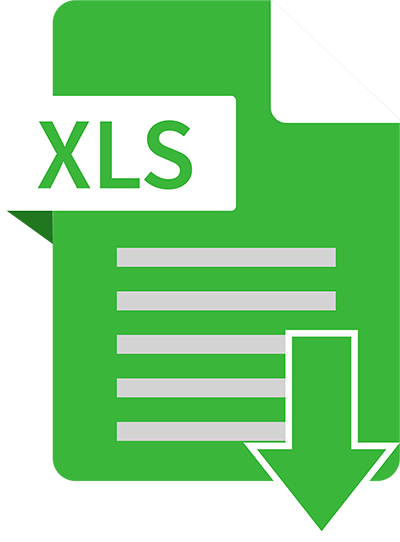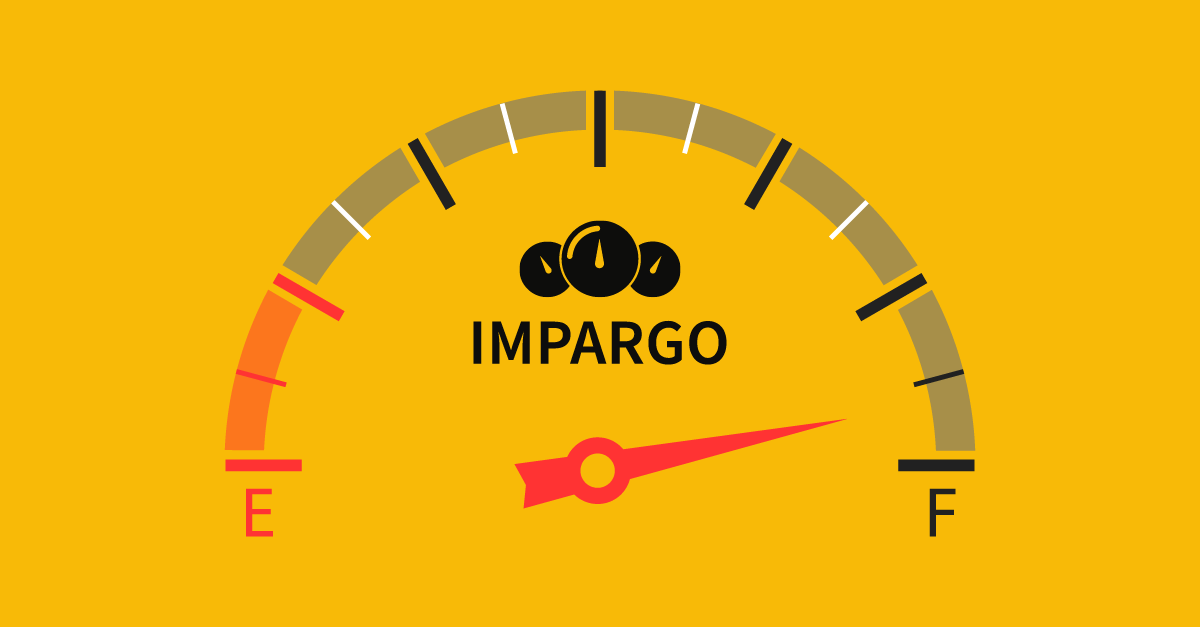
Diesel Floater: Everything You Need to Know
Table of Contents:
- What is a diesel floater?
- Why is diesel floating important?
- How to calculate diesel floater surcharge?
- The role of BGL in diesel price tracking
- Current diesel prices in Germany
The cost landscape in freight and logistics is constantly evolving—one key factor is diesel price volatility. Fuel costs make up 25–40% of total transport expenses, alongside vehicle and labor costs. Forwarders and logistics companies closely track price developments and adjust rates accordingly—especially when diesel becomes more expensive.
A diesel floater (also known as a fuel surcharge) allows transport providers to automatically adjust freight rates each month based on current diesel prices. In short: if diesel prices drop, your transport becomes cheaper. If they rise, so do your shipping costs.
In this article, we explain what a diesel floater is, how it affects transportation businesses, how to calculate it, and why it’s crucial for long-term pricing transparency.
What is a diesel floater?
A diesel floater is a dynamic surcharge that adapts to fluctuating diesel prices. It acts as a flexible pricing element added to the base freight rate. This surcharge is commonly negotiated between the carrier and shipper and typically appears as a separate item on the invoice. The main goal is to offset the rising or falling cost of fuel fairly and transparently.
Why is diesel floating important?
Diesel prices are one of the most volatile cost components in logistics. These fluctuations make it risky to use fixed fees, which can either undercut a service provider’s margins or overcharge the shipper. A diesel floater helps manage this uncertainty with a predefined agreement that adjusts costs fairly for both sides—eliminating the need for repeated negotiations.
If implemented correctly, a diesel floater is an effective tool for transparent cost-sharing between transport providers and shippers. It’s typically applied based on transport volume and agreed upon universally with all partners. For procurement, it’s essential to ask for pricing based on the same floater model—this makes offers directly comparable.
How to calculate diesel floater surcharge?
There are several approaches to implementing a diesel floater. It depends on the carrier’s transport structure and how fuel cost contributes to total expenses (e.g., FTL vs. groupage). It also depends on when and how price adjustments are made.
Below is a step-by-step guide on how to set up a diesel floater that’s simple and effective.
Step 1: Choose a diesel price index
The first step is for the carrier and shipper to agree on a diesel price index. This index reflects monthly average diesel prices and helps track fluctuations reliably. Since diesel prices differ by country, it’s important to choose a country-specific index. Common indexes in Germany include:
- Consumer prices of the mineral oil industry association MWV
- Producer price index from the German Federal Statistical Office
- Aral fuel price index
- Shell diesel price overview
Step 2: Create a surcharge table
Typically, a surcharge table is created that shows how different diesel price levels affect freight rates. To calculate this, multiply your fuel cost share (e.g. 28%) by the percentage change in the diesel price index.

To avoid recalculating every time the price changes slightly, the surcharge is usually calculated in brackets (steps). For example, each €0.0375/liter change in diesel price might increase the surcharge by 0.5%.
You can download the full diesel floater calculation sheet in both English and German. Click the button below to get the Excel file.
Screenshot of the calculation table:
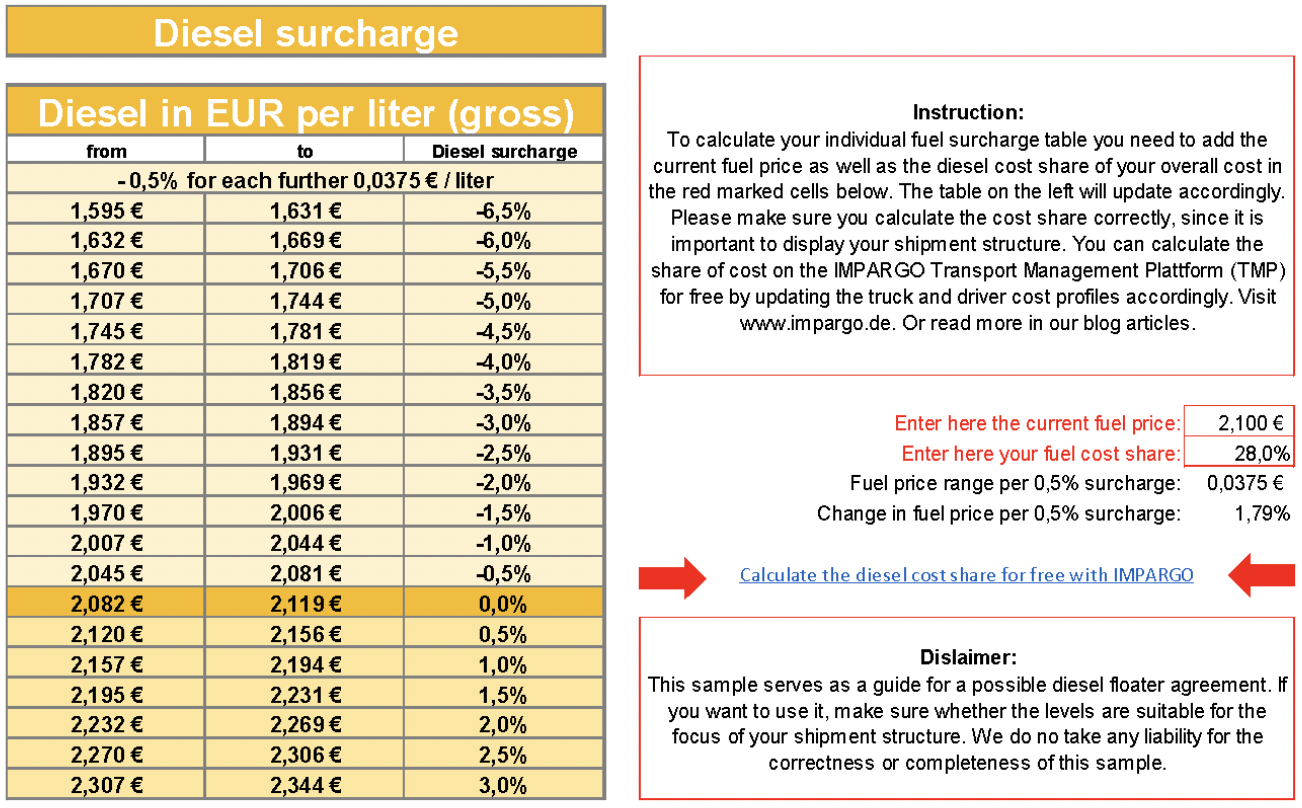
Example explained: If diesel prices rise from €2.10 to €2.29/l, and the agreed floater table says that this equals a 2.5% surcharge, then the rate goes from €1.50/km to €1.5375/km (1.50 × 1.025).
How to determine your fuel cost share
Your diesel cost share depends on what type of transport you offer. In groupage transport, fuel costs are lower compared to FTL or LTL services. The higher the share of fuel costs, the more the price will fluctuate with diesel changes.
Use the IMPARGO platform to calculate both your fuel cost share and the corresponding freight rates. Below is a table comparing groupage vs. FTL/LTL transport.
Shipment Type | FTL/LTL | Groupage |
IMPARGO Truck Map |  |  |
IMPARGO Cost Analytics | 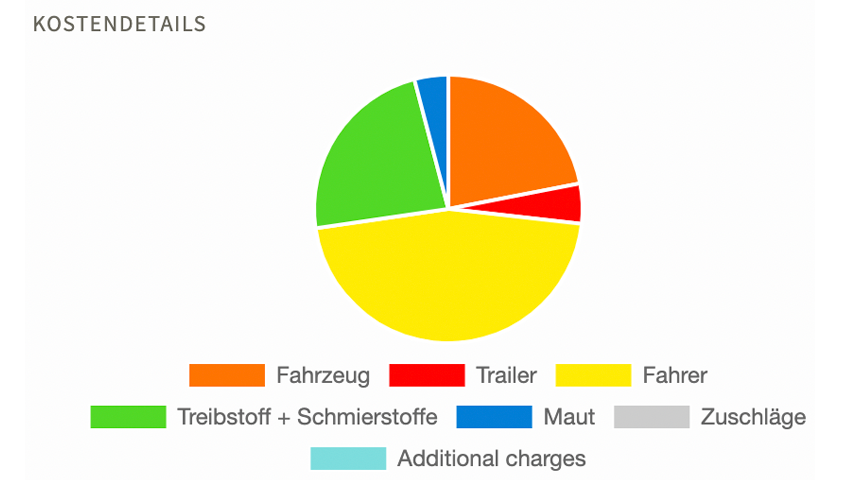 | 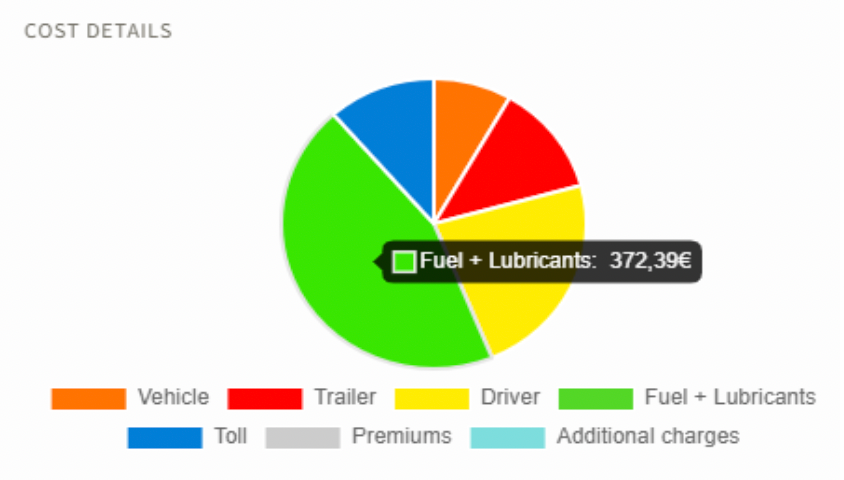 |
Total Cost | €807.35 | €439.83 |
Fuel Cost | €304.58 | €96.77 |
Share of Fuel Cost | ~ 38% | ~ 22% |
Administration Cost | €50.00 | €100.00 |
Truck Mileage | 526.1 km | 136.7 km |
# Stops | 2 | 7 |
Operational Time | 8 h | 8 h |
Driving Time | 6 h 11 min | 3 h 2 min |
Rest Time | 45 min | 45 min |
Un-/Loading Time | 1 h 4 min | 4 h 13 min |
Fuel Consumption [l/100km] | 27 l | 33 l |
Average Speed | 45 km/h | 85 km/h |
Fuel Price | €2.10/l | €2.10/l |
Link |
The role of BGL in diesel price tracking
Diesel price fluctuations have reached record highs in recent years. Logistics companies must stay informed, both to verify subcontractor rates and to adjust their own freight prices. In Germany, the Federal Association for Freight Transport and Logistics (BGL) plays an essential role in this process.
The BGL provides reliable diesel cost data, reflecting both general industry cost developments and fuel-specific trends. These updates follow a regular schedule and are available via the BGL website.
Current diesel prices in Germany
In September 2022, diesel prices rose dramatically. The German Federal Statistical Office regularly reports diesel prices for bulk buyers, based on price monitoring. These average prices (in EUR/100L, excl. VAT) offer a valuable benchmark for transport companies.
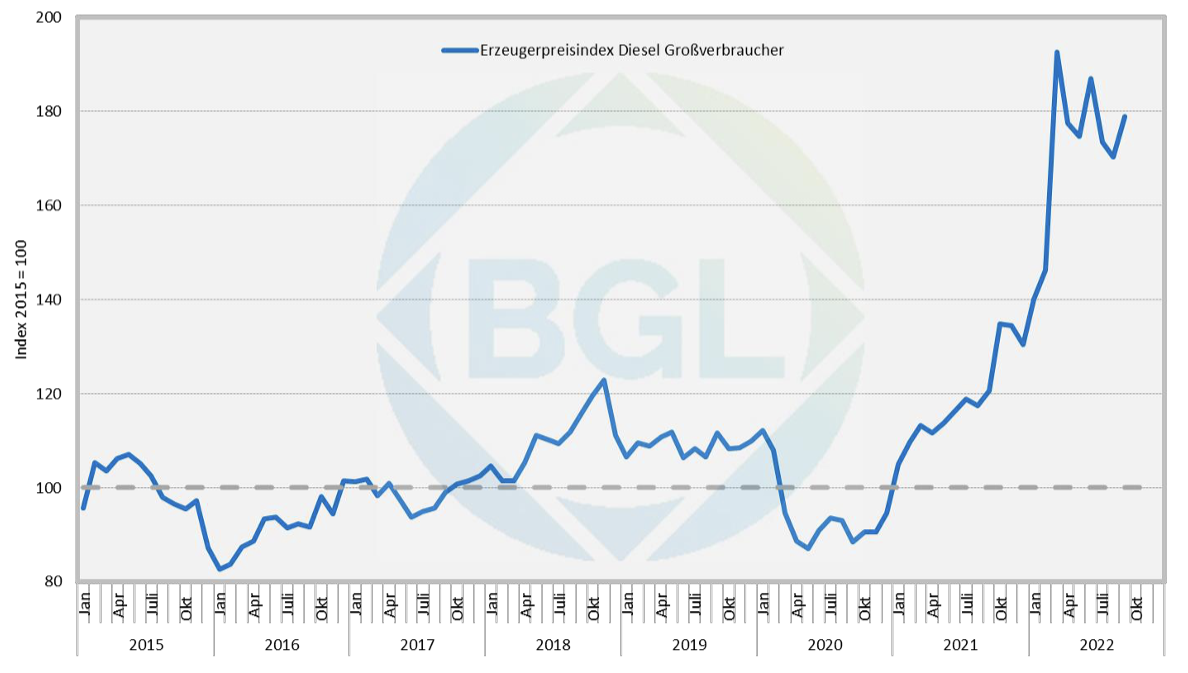
Source: German Federal Statistical Office, Wiesbaden
“With weekly diesel price reporting, the Federal Statistical Office provides tremendous support to logistics. This was a core demand by BGL, now fulfilled thanks to BMDV State Secretary Oliver Luksic,” said BGL board spokesman Prof. Dr. Dirk Engelhardt.
How IMPARGO helps you manage the diesel floater
Based on your diesel cost share, the IMPARGO platform helps shippers and carriers calculate and manage transport costs. With our free transport cost calculator , you can model pricing scenarios by updating your truck and driver cost profiles.
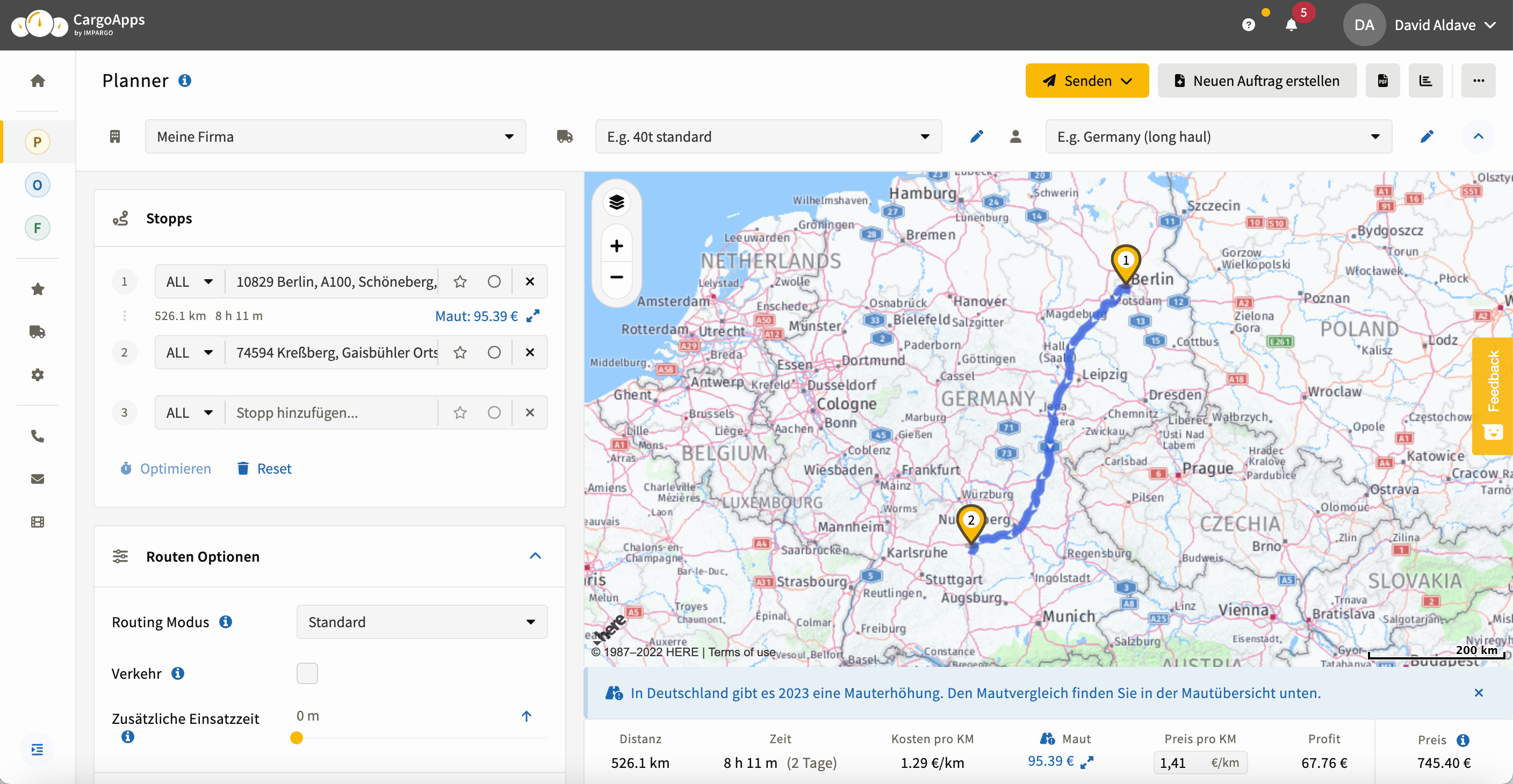
Want expert advice? Schedule a free personal consultation tailored to your business needs.
Frequently Asked Questions (FAQ)
What is a diesel floater in logistics?
A diesel floater is a fuel surcharge mechanism that adjusts based on diesel price changes. It ensures transparent cost sharing between shippers and transport companies.
How do I calculate a diesel floater surcharge?
To calculate it, choose a diesel price index and multiply the index change by your diesel cost share. This result determines how much your base freight rate adjusts.
Why is a diesel floater important?
Diesel prices fluctuate significantly. A floater protects both parties in a logistics contract from unpredictable cost spikes by automating fair price adjustments.
Who sets diesel prices in Germany?
Diesel prices are monitored and published by the German Federal Statistical Office and the BGL. These sources provide official price indexes for floater calculations.
Can software help manage diesel floaters?
Yes. IMPARGO's platform allows carriers and shippers to calculate fuel shares, adjust freight prices, and simulate different cost models with updated fuel data.

